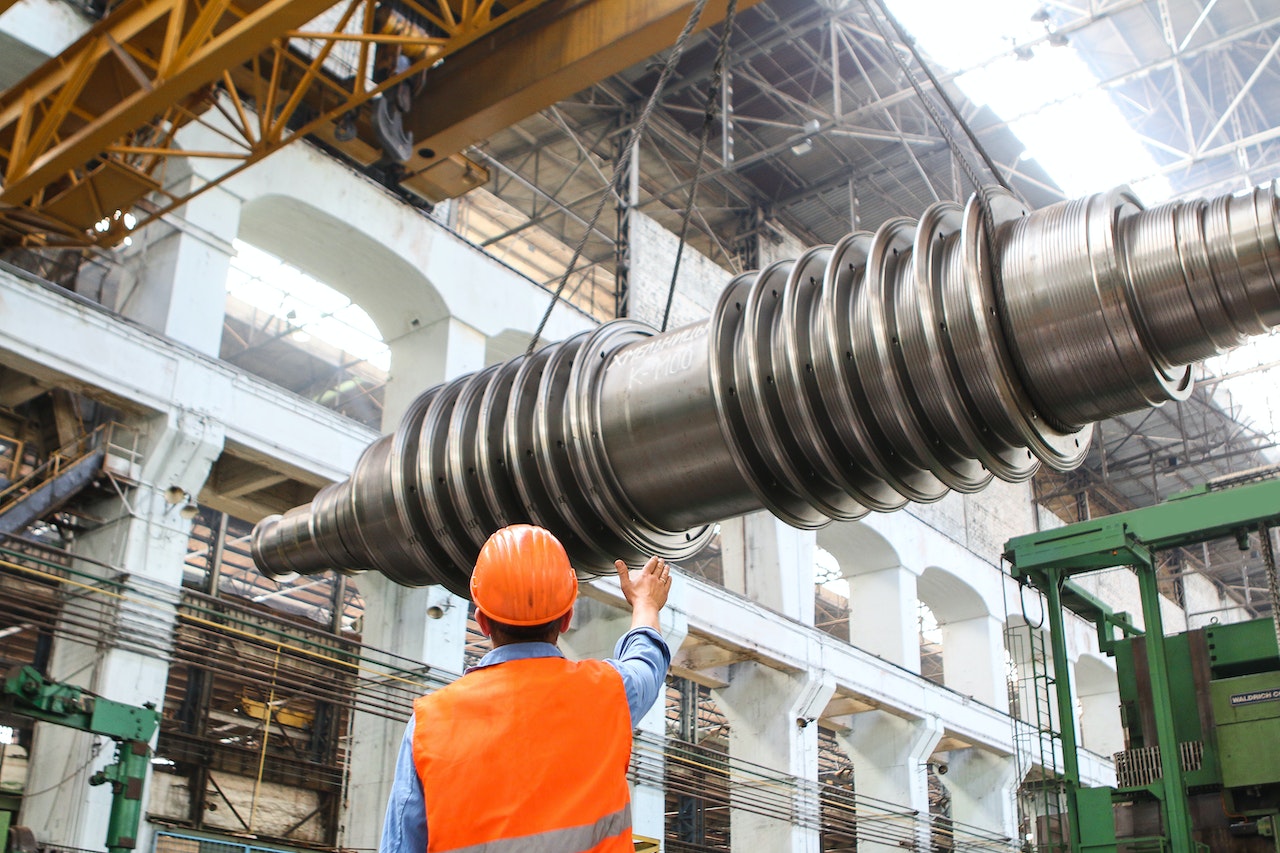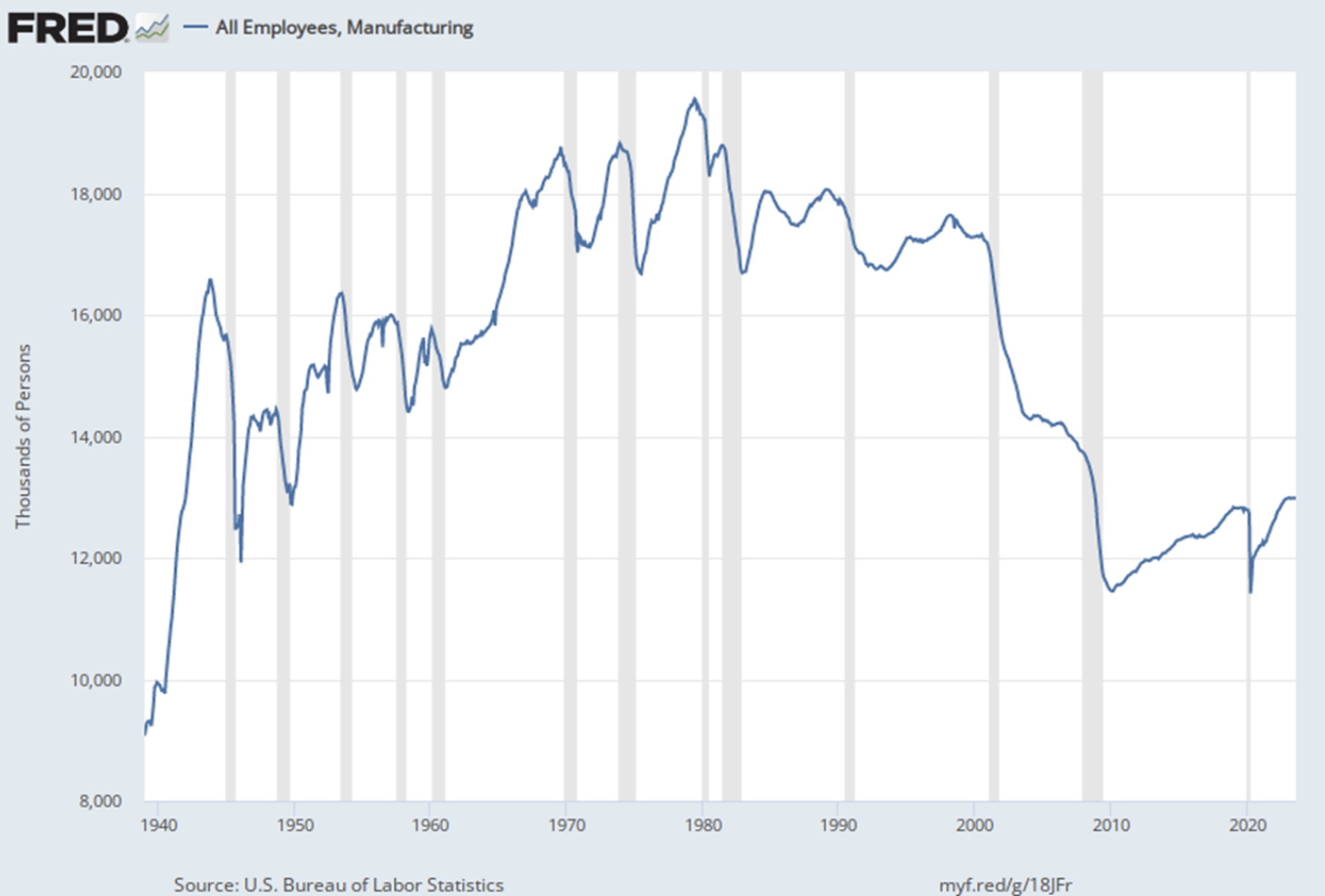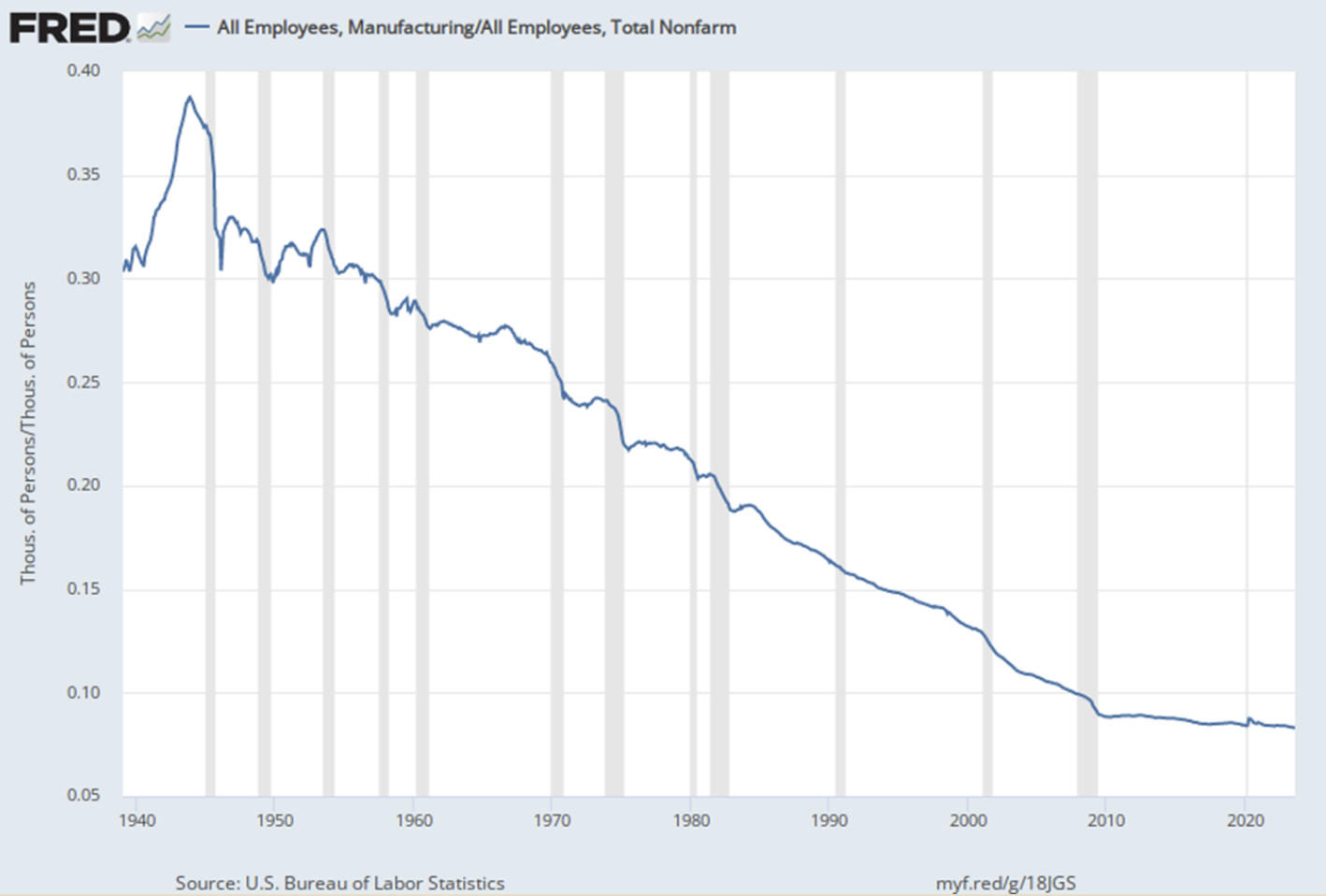Comments
- No comments found

I seem to run into comments on a semi-regular basis about how the policies of either President Biden or President Trump either are bringing back US manufacturing jobs or have already done so. Thus, a quick reality check seemed in order.
This figure shows total US manufacturing jobs back to 1939. After the dramatic fall in manufacturing jobs in the first decade of the 21st century (for reasons including the dramatic rise in Chinese exports after China joined the World Trade Organization in 2001 and the effects of the Great Recession from 2007-09), There has indeed been a modest bounceback. It started around 2010, and after an interruption from the pandemic recession has continued since.

It’s important to keep the size of this bounceback in perspective. As you can see from the vertical axis, US manufacturing jobs had declined to 11.5 million in early 2010, and have now risen to 13 million. This increase of about 13% in manufacturing jobs is meaningful–although it’s perhaps worth noting that the rise was underway and much of the gain had happened before either the Trump or Biden presidency.
Another useful perspective is to look at US manufacturing employees as a share of all employees. Here’s the figure. On the far left, you can see the jump in US manufacturing jobs during World War II, and the fall immediately after the war. Since then, the long-term story of US manufacturing employees as a share of total US employees has been one of gradual decline, from about one-third of the US labor force back in the 1950s to about 8% of the labor force at present.

In the case of US manufacturing, two insights can both hold true. One is that it’s important to have an active and robust US-based manufacturing sector across a variety of industries, because it’s important for the US economy to be close to the frontier of innovation in a wide range of areas, and being physically close to actual manufacturing is useful in developing and applying new technologies and production techniques.
The other and complementary insight is that a substantial renaissance in US manufacturing jobs, in a way that they become a steadily and substantially rising share of US employment over time, is extremely unlikely. Manufacturing as a share of employment has been declining for the US for a long time, as well as for high-income countries across the world. Jobs in services (including services related to design, management, marketing, transportation, installation, maintenance, and repair of manufactured output) have been a rising share of employment for decades. For low- and medium-income countries, a key question is whether or how they can grow their economies based on a rise in service-oriented jobs. Manufacturing across many industries has become increasingly capital-intensive, often making use of very expensive facilities (think semiconductors, for example), along with automation and robots.
So yes, the US needs a healthy manufacturing sector, and that employment option will work well for millions of people. But the other 90+% of the US workforce will need other opportunities for good jobs and prosperity.
Timothy Taylor is an American economist. He is managing editor of the Journal of Economic Perspectives, a quarterly academic journal produced at Macalester College and published by the American Economic Association. Taylor received his Bachelor of Arts degree from Haverford College and a master's degree in economics from Stanford University. At Stanford, he was winner of the award for excellent teaching in a large class (more than 30 students) given by the Associated Students of Stanford University. At Minnesota, he was named a Distinguished Lecturer by the Department of Economics and voted Teacher of the Year by the master's degree students at the Hubert H. Humphrey Institute of Public Affairs. Taylor has been a guest speaker for groups of teachers of high school economics, visiting diplomats from eastern Europe, talk-radio shows, and community groups. From 1989 to 1997, Professor Taylor wrote an economics opinion column for the San Jose Mercury-News. He has published multiple lectures on economics through The Teaching Company. With Rudolph Penner and Isabel Sawhill, he is co-author of Updating America's Social Contract (2000), whose first chapter provided an early radical centrist perspective, "An Agenda for the Radical Middle". Taylor is also the author of The Instant Economist: Everything You Need to Know About How the Economy Works, published by the Penguin Group in 2012. The fourth edition of Taylor's Principles of Economics textbook was published by Textbook Media in 2017.
Leave your comments
Post comment as a guest